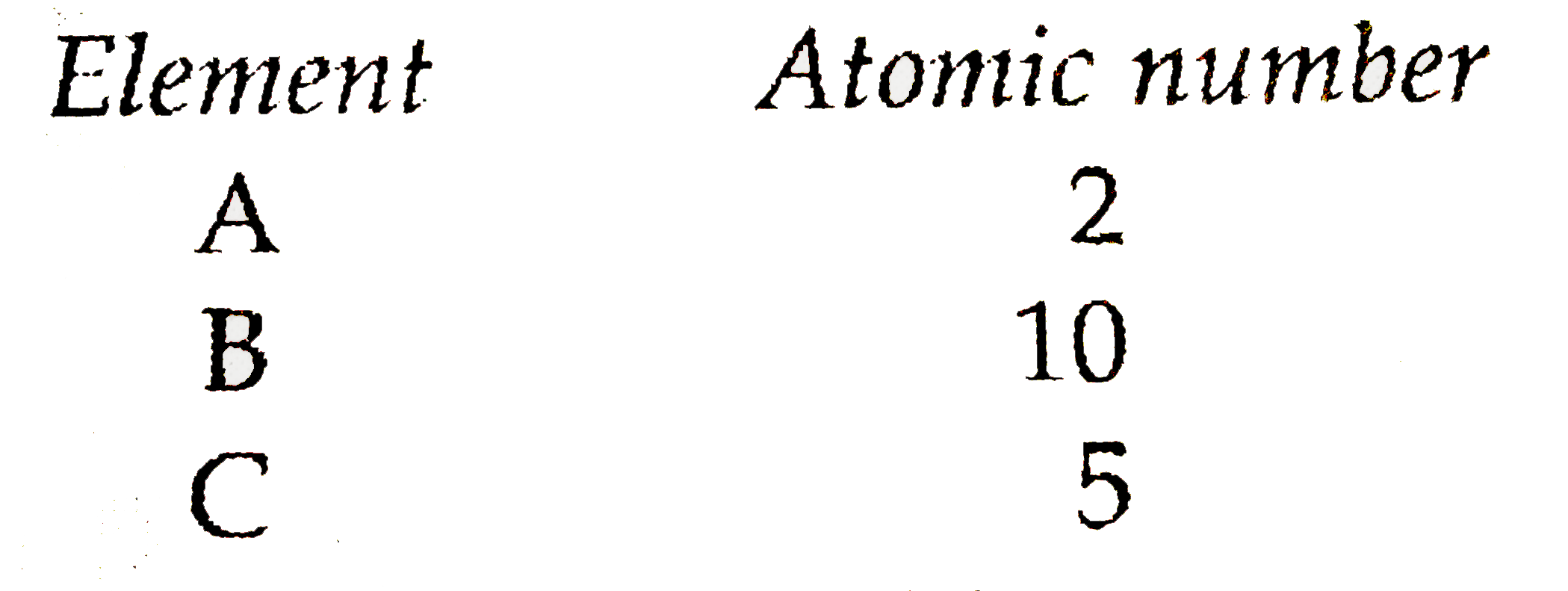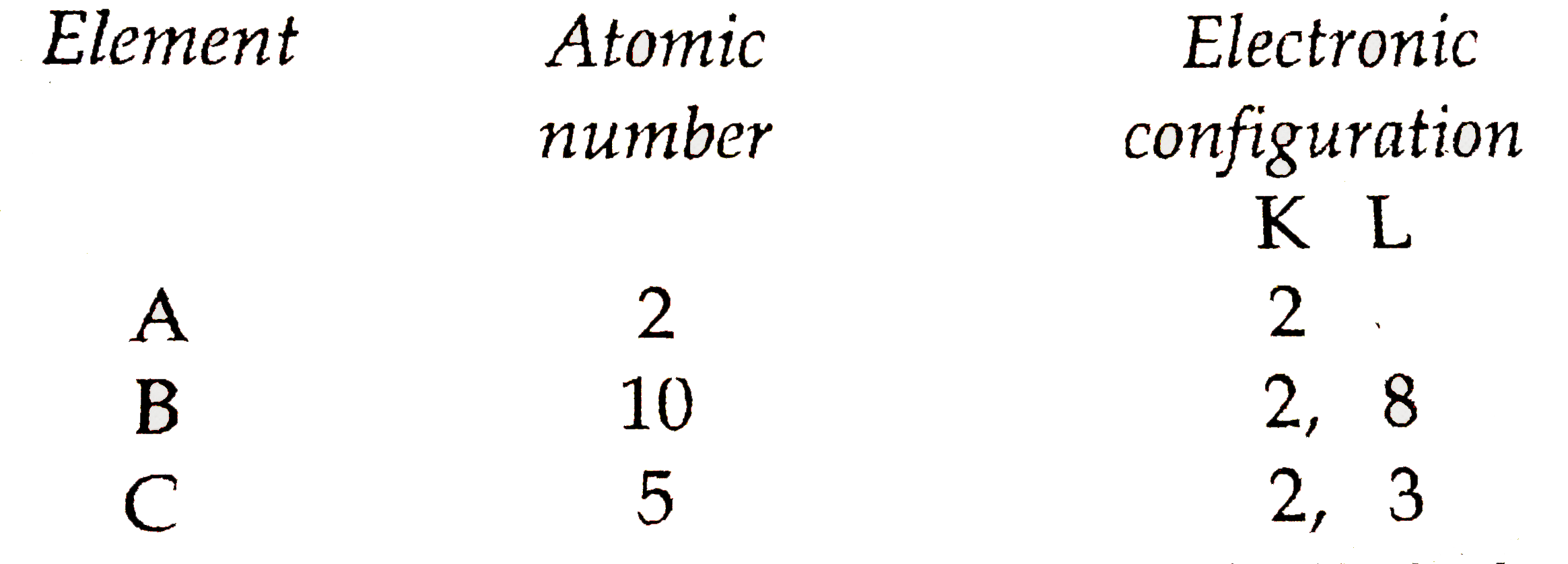Which of the following belong to (i) same period and (ii) the same group?

Video Solution
Text Solution
In order to solve this problem, we should first write down the electronic configurations of the elements A,B and C by using their atomic numbers. This is given below:

(i) Those elements which have the same valence shell, belong to the same period of the periodic table. Now, from above given electronic configurations we can see that the elements B and C have the sake valence shell (which is L shell) therefore, elements B and C belong to the same period of the periodic table. since the elements B and C have two electron shells (K and L ) in their atoms, so they actually belong to second period of the periodic table.
(ii) Those elements which contain the same number of valence electrons, belong to the same group of the periodic table (except helium which has 2 electrons in the K valence shell and belongs to group 18). Now , if the we look carefully at the above given electronic configurations, we find that the element A has 2 electronss in its only shell, K shell, so it is an inert gas helium and belongs to group 18. Further, the element B has 8 valence electrons, so it belongs to group 18. Thus, the elements A and B belong to the same group of the periodic table (which is group 18). Please note that element C has 3 valence electrons, so belongs to group 13 of the periodic table.
We know that the atomic number 2 is of helium, thus the element A is inert gas helium. The atomic number 10 is that of neon, thus the element B is inert gas neon. And finally, the atomic number 5 is of element boron, thus the element C given in this problem is actually boron. Plese note that A,B and C are not the chemical symbols of the elements.
|
Updated on:21/07/2023
Topper's Solved these Questions
- BOOK - LAKHMIR SINGH & MANJIT KAURCHAPTER - PERIODIC CLASSIFICATION OF ELEMENTSEXERCISE - Exercise215videos
PERIODIC CLASSIFICATION OF ELEMENTS
- BOOK - LAKHMIR SINGH & MANJIT KAURCHAPTER - PERIODIC CLASSIFICATION OF ELEMENTSEXERCISE - SHORT ANSWER TYPE8videos
PERIODIC CLASSIFICATION OF ELEMENTS
- BOOK - LAKHMIR SINGH & MANJIT KAURCHAPTER - METALS AND NON-METALSEXERCISE - Short Answer Type Qustions1videos
METALS AND NON-METALS
- BOOK - LAKHMIR SINGH & MANJIT KAURCHAPTER - TEST PAPER 1EXERCISE - Section B4videos
TEST PAPER 1
Similar Questions
Knowledge Check
- Question 1 - Select One
Which among the following belong to same phyla?
APhysalia, obelia, Pleurobranchia – CoelenterataBBombyx, Palaemon, Limulus – ArthropodaCStar fish, jelly fish, Sea urchin – EchinodermataDCuttle fish, devil fish, Patella – mollusca - Question 2 - Select One
Which among the following belong to same phyla?
APhysalia, obelia, Pleurobranchia-CoelenterataBBombyx, Palaemon, Limulus - ArthropodaCStar fish, jelly fish, Sea urchin - EchinodermataDCuttle fish, devil fish, Patella - mollusca - Question 3 - Select One
Which of the following belongs to +I group ?
A−FB−NO2C−COORD−CH(CH3)2
Which one of the following belongs to -I group ?
View SolutionWhich one of the following belongs to the same class?
View SolutionWhich one of the following belong to the same category ?
View SolutionWhich of the following combination of elements belong to the same group?
View SolutionWhich of the following combination of elements belong to the same group?
View Solution

